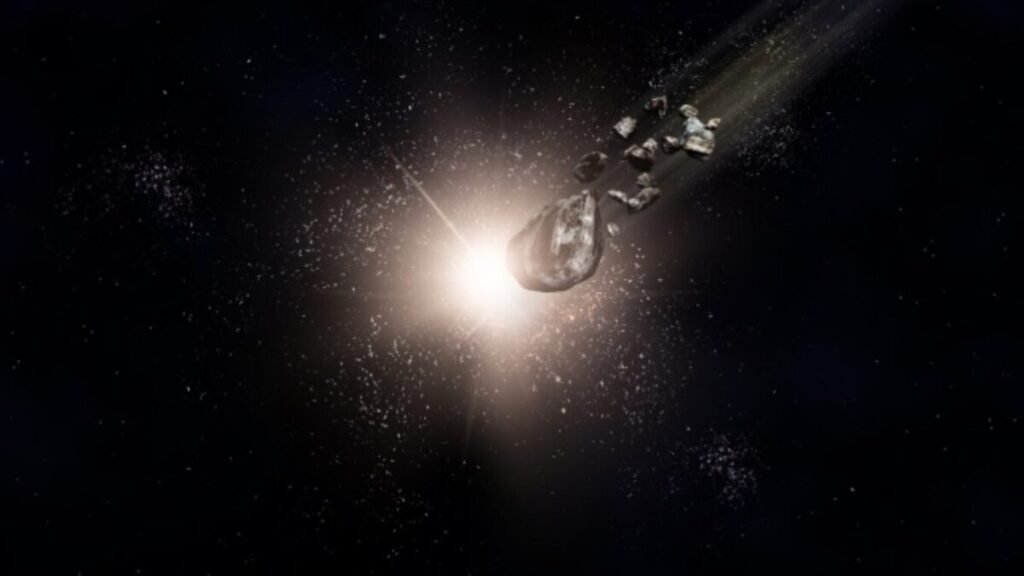A brilliant proposal: asteroid hunting with solar mirrors!

Heliostats: From Capturing Solar Light to Tracking Space Rocks
John Sandusky, a scientist, observed an untapped opportunity: heliostats — giant mirrors designed to concentrate sunlight — spend the entire night doing nothing. What if they could be used to reflect the faint light that asteroids scatter in the darkness?
“They have no nighttime job,” Sandusky commented. “But they could help us detect objects near Earth at a low cost, without the need to build new telescopes.”
An Experimental Night between Mirrors and Stars
The first test of the system took place in the desert, at Sandia’s installation. For several nights, Sandusky used one of the 212 heliostats without modifying it. He only applied existing software to move it gently once per minute.
From the top of the tower, 60 meters above the ground, he observed the collected light with traditional optical instruments. The goal was not yet to locate asteroids, but to confirm if the system could detect moving stars. And it succeeded.
A Cheap Solution… with Strategic Value
In addition to its low cost, Sandusky suggests that the US Space Force could use it to track ships in regions like cislunar orbit, where it is currently difficult to maintain surveillance from Earth.
The work has been published in the journal Unconventional Imaging, Sensing, and Adaptive Optics 2024 and presented at an international conference. The goal now is to expand the test with more heliostats pointing at known celestial bodies and, eventually, demonstrate that they can detect smaller objects.
Source: [original article link]





